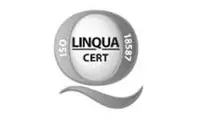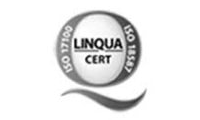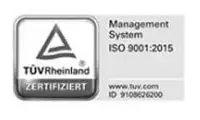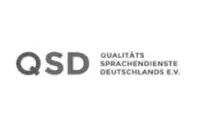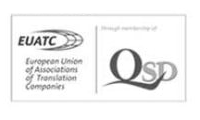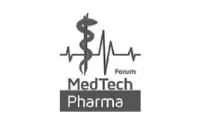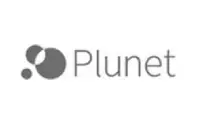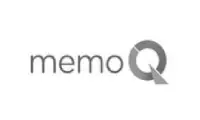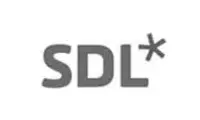
Technology in use at mpü
Translation technology
Translation technology helps our translators to complete their projects better and more quickly. Support is provided by working in a Computer Aided Translation tool, also known as a CAT tool. The tool manages translations, the databases of previous translations and the glossaries and terminology and quality checks.
Nowadays there is no longer anything revolutionary about the use of technology in and of itself. The tools we use are the latest technology that is available. The art is in knowing how to use them properly, and we know how.
At mpü, the interaction between CAT functions is efficiently structured,
the database maintenance is systematically organised and the translators
and project managers can make full use of the potential of the software thanks to the
many training sessions they receive.
CAT tools
The CAT tool combined many different functions in a single system:
translation memory – term base – quality assurance check.
It manages the translators in their roles as translators and reviewers and makes a systematic quality assurance check even possible for our project managers.
In the past, the market was dominated by three major CAT tool developers, but increasing numbers of smaller CAT tool solutions are finding their way to our customers. Of course we support common CAT tools such as SDL Trados, memoQ and XTM. Most CAT tool solutions can also export .xliff files without any problems, and we can then further process these.
Simply come to us with your CAT tool solution.
Maintenance is what puts mpü above other databases
1. Translation memory (translation databases)
Translation memory systems are translation tools that help to
We complete our customer projects using translation memories that recognise terminology and structural repetitions and make suggestions to ensure a uniform translation.
2. Term base (terminology databases)
Ongoing improvement to text quality using terminology management
Consistent corporate language ensures a uniform appearance and high recognition value for your company.
Term bases ensure that any terminology or corporate wording you require – as well as the specialist terminology specified by the authorities – can be consistently integrated into the language process and is uniformly used across all translations.
Maintaining and managing terminology is a complex process because sector-specific technical terms and precise corporate wording have become an essential component of successful international business operations and play a critical role even in the authoring process.
Your technical editors define your company-specific terminology;
we ensure that it is used
in a sensible way in your translations.
During the translation process, the CAT tool recognises the individual terms from the term base and the translator is required to use the suggested word.
Overall, optimal terminology management contributes to improved intelligibility and acceptance among global target groups as well as the authorities and benefits all those involved in the process through language consistency.
We would be happy to provide professional advice on your project.
3. Quality assurance check
What good are all the precautions, databases and specifications if they can’t be systematically checked? That’s why we carry out a quality assurance check for each one of your projects.
Depending on the type of project and document, electronic quality tools are used to identify any errors in the translation. Here, too, we check for consistency within the translation and for the correct and consistent use of your terminology.
The potential errors are then checked by a project manager to determine whether they are valid. Any eventual doubts are clarified in collaboration with our customers and translators.
The QA check looks at:
Even if you don’t know how our QA check works, you’ll definitely notice the difference!
Machine translation
In the past few years, machine translation has become more established in the industry, although it hasn’t replaced “traditional translation”. Instead, an additional tool has been developed for language service providers.
mpü offers a wide range of solutions for machine translation. We are able to both tailor the solution to your needs from a technical perspective and scale it to the pending volume of translation.
Machine translation and post-editing can be practical tools and not just for the reasons that are often mentioned. Speed and price are very important but the immediate availability can also make process automation easier.
If you are interested in machine translation, we would be happy to analyse the texts together with you. We advise you on whether machine translation is worthwhile for your company and which type of machine translation would be best suited.
Optimally automated internally so we have more time for you.
Process management
File formats
We’d love to say we can work with all file formats, but that’s not entirely true. We can work with all open file formats. PDF files and scans may also be able to be translated once we’ve converted them, though.
- .docx (.doc, .docm, dotx, .dotm), .pptx, .vsd (.vdx) and .xlsx from the Microsoft product family
- .rtf for Rich Text Format
- .odt for OpenOffice and .odf for LibreOffice
- .csv (Comma Separated Value)
- .xliff and .xlf
- .xml and .html
- .indd and .idml for Adobe applications
- .ai for Adobe Illustrator
- .psd for Adobe Photoshop
- .fm and .mif for Adobe FrameMaker
- .cdr for Corel Draw
- .qxp and .qxd, a layout format for the program QuarkXPress
- .txt: the classic – pure text without any formatting.
Project management system
At mpü, projects are managed with a software that is specifically for translation projects – Plunet.
With the help of Plunet, we can tell you who translated which document for an audit in five years’ time, and within a few minutes we can send you certificates and CVs of the translators.
Of course Plunet can do more than just that.
In collaboration with your CMS, it can also generate and accept jobs automatically. What’s the advantage for you? Our accounting method means that time we save is time you save too.
mpü customer portal
easy – secure – transparent
You can still make use of some of the advantages of our project management software even without a direct data interface. Our customer portal makes cost controlling and translation management easier for you.

